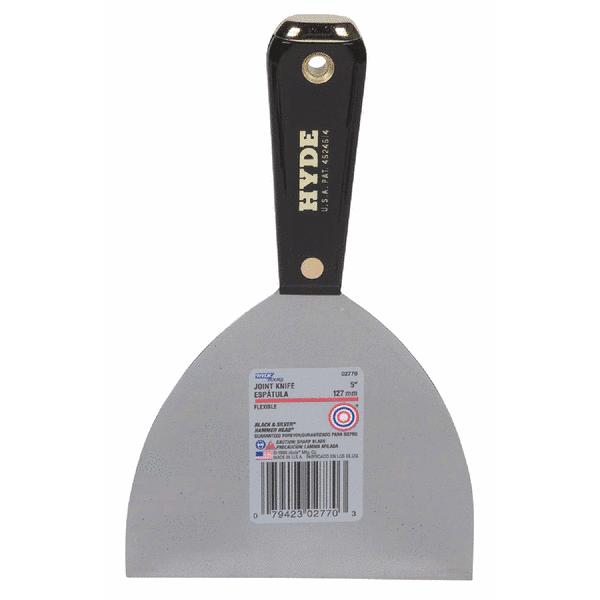
Sooner or later you will have to fix your walls. Drywall gets damaged, or there is leak in the walls. Here is a list of tools and materials you'll need to fix your walls.
Tools:
- Utility knife : Drywall sheets are cut to size by scoring one size with a utility knife and breaking the side off in one swift motion. Keep your knifes sharp.
- Drywall saw: A drywall saw is used to cut holes into drywall for electrical boxes or access. It has a sharp point so it can be pushed through the drywall to start a cut. No drilling is required.
- Drywall joint knife: The knife, despite the name, is used to spread joint compound. It's just the right size to be most useful when doing drywall work.
- Mud pan: The mud pan is an essential tool. It's straight edges are used to clean the mud off the joint knife. A clean knife makes it much easier to create smooth finishes.
- Hand sander + sanding pads: A hand sander gives you the best control when sanding drywall. For small jobs it is much cleaner than power sanding. You do not need more. Mount a drywall sanding paper on the sander. Sanding screens work faster, but leave a rough surface. A pass with sand paper is still required. On small jobs the sand paper alone is fast enough.
- Pole sander: A pole sander is used when you can't reach with a hand sander. It's much faster and less tiring to use than the hand sander.
On Amazon
Materials
Drywall compound
Joint compound comes in many different types. The main variable is how fast the compound sets. The time you have to work with the compound ranges from a few minutes to a few hours. For home owners a longer open time is usually preferred.
Commercial tapers use fast setting compound. This allows them to apply multiple coats in a single day. Unless you work fast, get the longest open time you can find.
Joint compound is available either premixed or in powder form. Premixed compound saves time. No preparation is necessary. Powder compound is cheaper and can be stored indefinitely. Mold will grow in premixed containers a few months after they have been opened. Unless your job is big, buy powdered compound. That way you can use a bit every time you have a small job.
Drywall tape
Drywall tape comes in paper or fiberglass form. It reinforces drywall joints. Both types produce perfect results when used properly. The fiberglass mesh sticks to the wall on its own, which is a nice feature.
The mesh, however, can't be used for inside corners. The paper tape is cheaper, but a bit messier to apply. It needs to be covered in mud to stick to the walls. Either option works fine. Buy whatever is cheaper.
Summary
Fixing drywall is not rocket science. You will make mistakes. Not matter how bad the mistake is, it can be fixed with a little more sanding and anther coat of compound. You'll be much happier after you fixed that hole in the wall that has been there for months. There is no need to call a pro.










